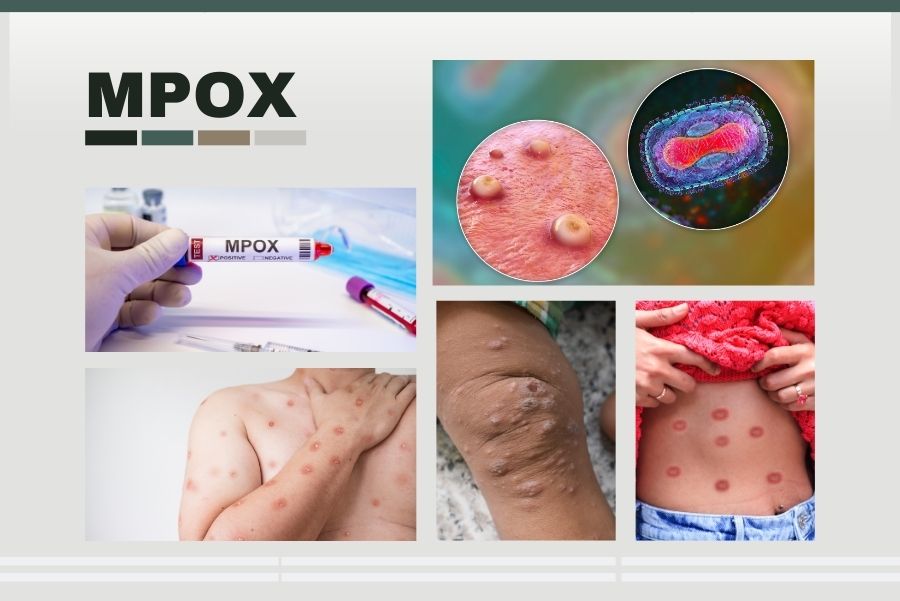Mpox: A Growing Concern in India
Mpox, formerly known as monkeypox, has recently emerged as a significant concern in India. Following global health alerts from the World Health Organization (WHO), India has reported over 30 cases since July 2022. The first case this season, confirmed in September 2024, involved a traveler from a region with ongoing mpox transmission. The country is on high alert to prevent further spread of the virus.
What is Mpox?
Mpox is caused by the monkeypox virus, which belongs to the same family as the smallpox virus. The disease presents with symptoms such as fever, headaches, muscle aches, swollen lymph nodes, and a distinctive skin rash that can turn into blisters. Although mpox is generally less severe than smallpox and has a lower mortality rate, it can still lead to serious complications, especially in immunocompromised individuals or those with underlying conditions.
Mpox in India
Current Statistics
As of 2024, India has reported 30 confirmed cases of mpox. While this number may seem low compared to other viral outbreaks, the Indian government is vigilant due to the virus’s potential for wider spread. Most cases involve young males, and about half of the global cases are in individuals living with HIV. The virus primarily spreads through close physical contact, with sexual contact being a major mode of transmission.
Government Measures
The Indian Ministry of Health has increased surveillance at airports and key entry points to screen travelers for symptoms. Authorities manage detected cases through isolation and effective treatment protocols, which helps prevent major community outbreaks.
How Does Mpox Spread?
Mpox primarily spreads through direct contact with infectious rashes, scabs, or bodily fluids. Respiratory secretions during prolonged face-to-face contact, sexual contact, and contaminated materials like clothing or bedding can also transmit the virus. Although mpox is more common among men who have sex with men (MSM), anyone can contract the virus.
Prevention Measures-
Preventing mpox requires both individual and community-level vigilance. Key measures include:
- Avoid Close Contact: Stay away from individuals showing symptoms, especially those with visible rashes or sores.
- Good Hygiene: Regular handwashing with soap and water or using hand sanitizers can reduce the risk of infection.
- Safe Practices: High-risk groups, including MSM and frequent travelers to affected areas, should practice safe sex and limit physical contact.
- Isolation and Quarantine: Promptly isolate suspected cases and monitor close contacts to prevent further transmission.
- Vaccination: Although specific mpox vaccines are not widely available, the smallpox vaccine offers some protection against the virus.
Treatment for Mpox
There is no specific treatment for mpox, but supportive care and symptom management aid recovery. Most patients experience mild symptoms and recover within 2-4 weeks. Antiviral medications like tecovirimat (TPOXX), initially developed for smallpox, show promise in treating severe cases.
Healthcare professionals in India are trained to manage complications, especially in immunocompromised patients. Facilities follow strict protocols, including isolation, contact tracing, and real-time case reporting.
India’s Preparedness
The Indian government is actively working to control mpox. Public health officials have issued guidelines for healthcare professionals, especially in skin and STD clinics, to identify and manage symptoms of mpox. States and Union Territories are enhancing surveillance and ensuring timely isolation and treatment of confirmed cases.
The government is also increasing awareness campaigns to educate the public about the virus. Clear risk communication is crucial to avoid panic and promote preventive measures. Special efforts target high-risk populations, such as MSM and individuals with HIV, to emphasize early detection and safe practices.
Conclusion
Mpox in India, though currently under control, remains a public health concern due to its transmission potential. Recognizing symptoms early, understanding how the virus spreads, and implementing preventive measures are essential for managing and containing outbreaks. With effective precautions and communication, India is well-prepared to handle mpox and address any future challenges posed by the virus. Public awareness and targeted healthcare responses will be key to maintaining safety and readiness.








